Article Peer-Reviewed
Environmental Priorities, Drivers and Barriers in the Craft Beer Sector: Insights from Massachusetts Breweries
1
Department of Management, University of Massachusetts Boston, Boston, MA 02125, USA
2
Department of Statistics and Applied Mathematics, University of Economics, 9000 Varna, Bulgaria
3
Belmont Municipal Light Department, Belmont, MA 02478, USA
*
For correspondence.
Academic Editor:
Received: 18 December 2023 Accepted: 10 June 2024 Published: 24 June 2024
Abstract
This article provides empirical research about the environmental priorities, drivers, and barriers in the craft beer sector. It is based on a survey of 43 Massachusetts craft breweries. The authors found that the top three environmental drivers for the industry include: being an environmental steward (81%), saving money (67%), and maintaining a good reputation with the community (63%). The most significant challenges preventing craft breweries from adopting pollution prevention and environmental sustainability strategies include: lack of financial resource (74%), limited knowledge about their opportunities (67%), and lack of time (67%). The top three pollution prevention areas of interest to Massachusetts craft breweries include energy efficiency (88% of participants), water efficiency (76%), and using safer chemicals (67%). In addition, over 80% of participants expressed interest in a “Green Brewery” recognition, obtaining information about state and other incentives and grants, and preventing waste through reuse or recycling. Spent grain management, recycling, and waste prevention are the three areas where craft breweries perform best presently. Wastewater reduction and reducing the use of hazardous chemicals are the most challenging areas for them. The re-search also found some differences in the priorities and drivers when comparing nanobreweries (with a production of fewer than 1000 beer barrels (bbl)/year) and larger craft breweries (with a production over 1000 bbl/year). The study findings provide valuable insights for devising effective policies and actions to support the sector’s adoption of pollution prevention.
Figures in this Article
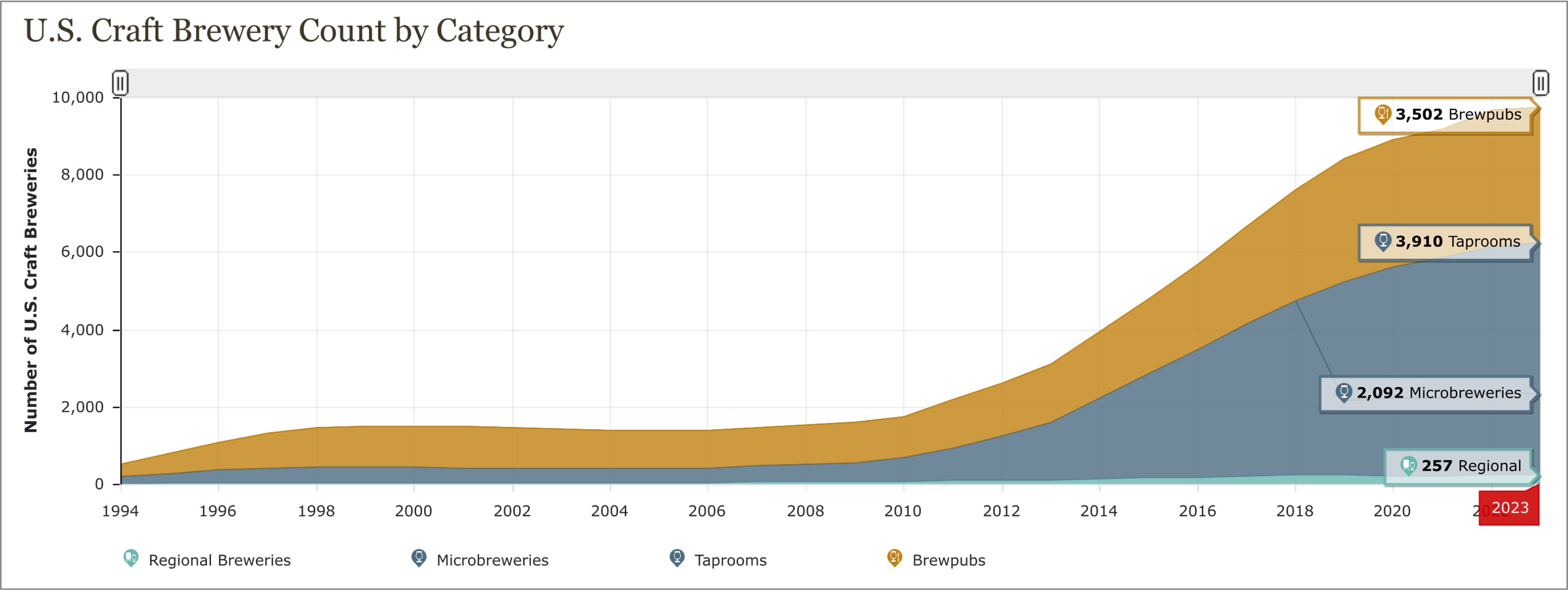 Figure 1
Figure 1
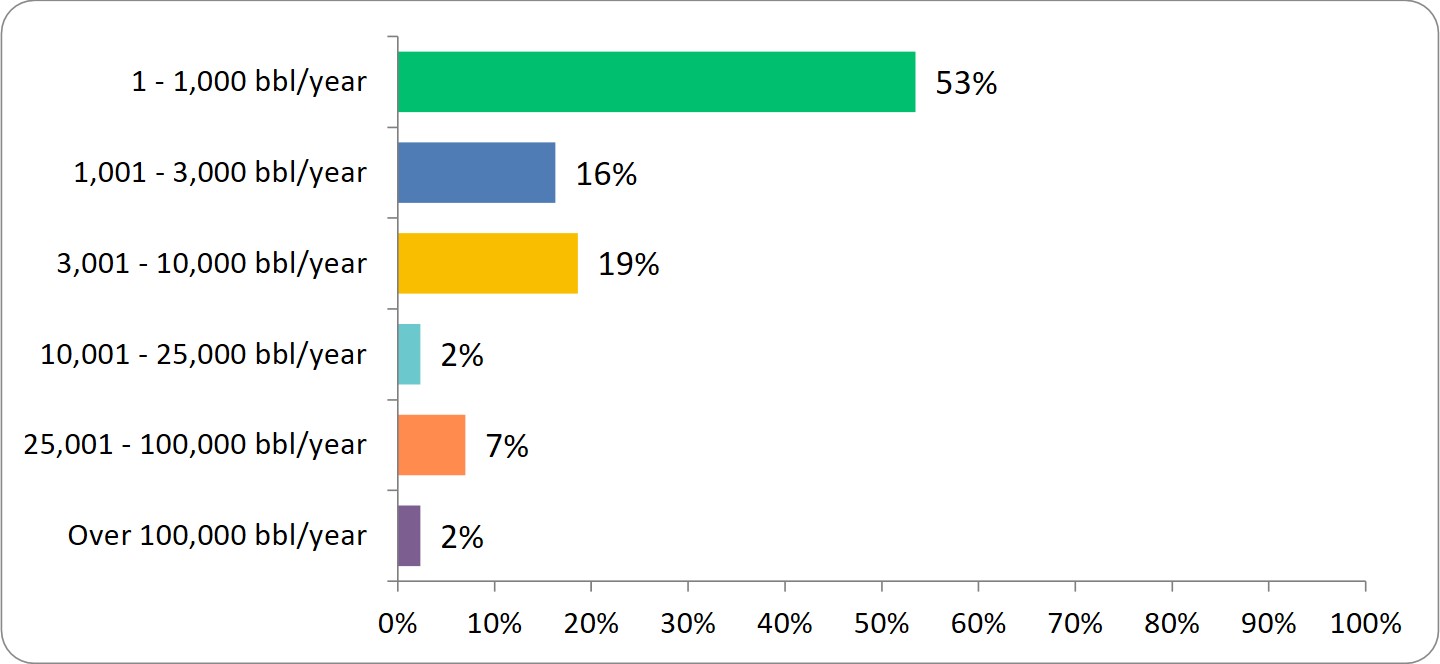 Figure 2
Figure 2
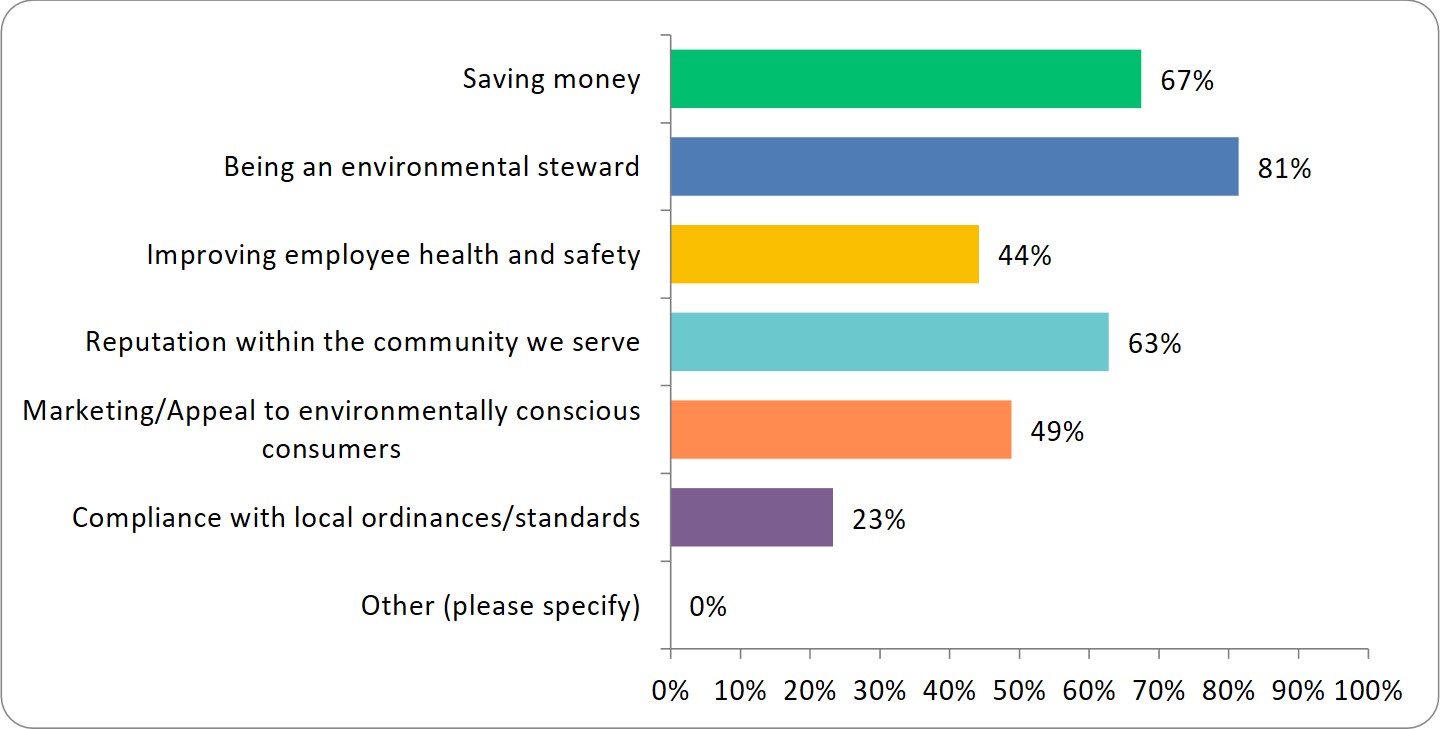 Figure 3
Figure 3
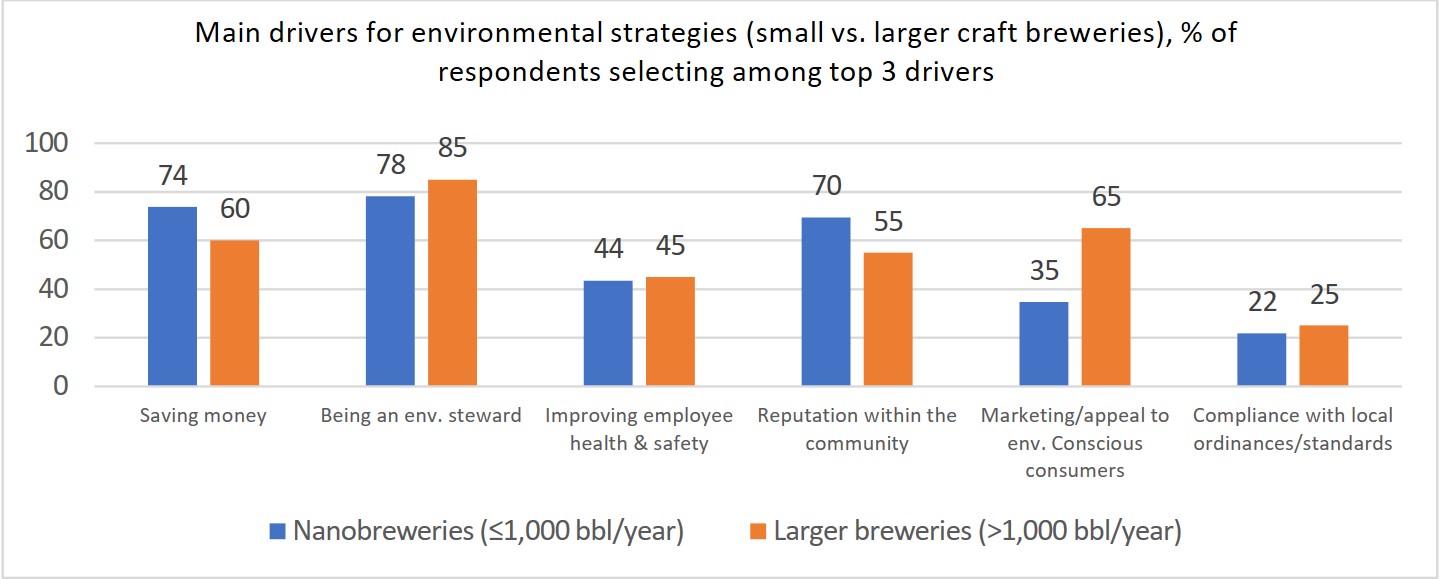 Figure 4
Figure 4
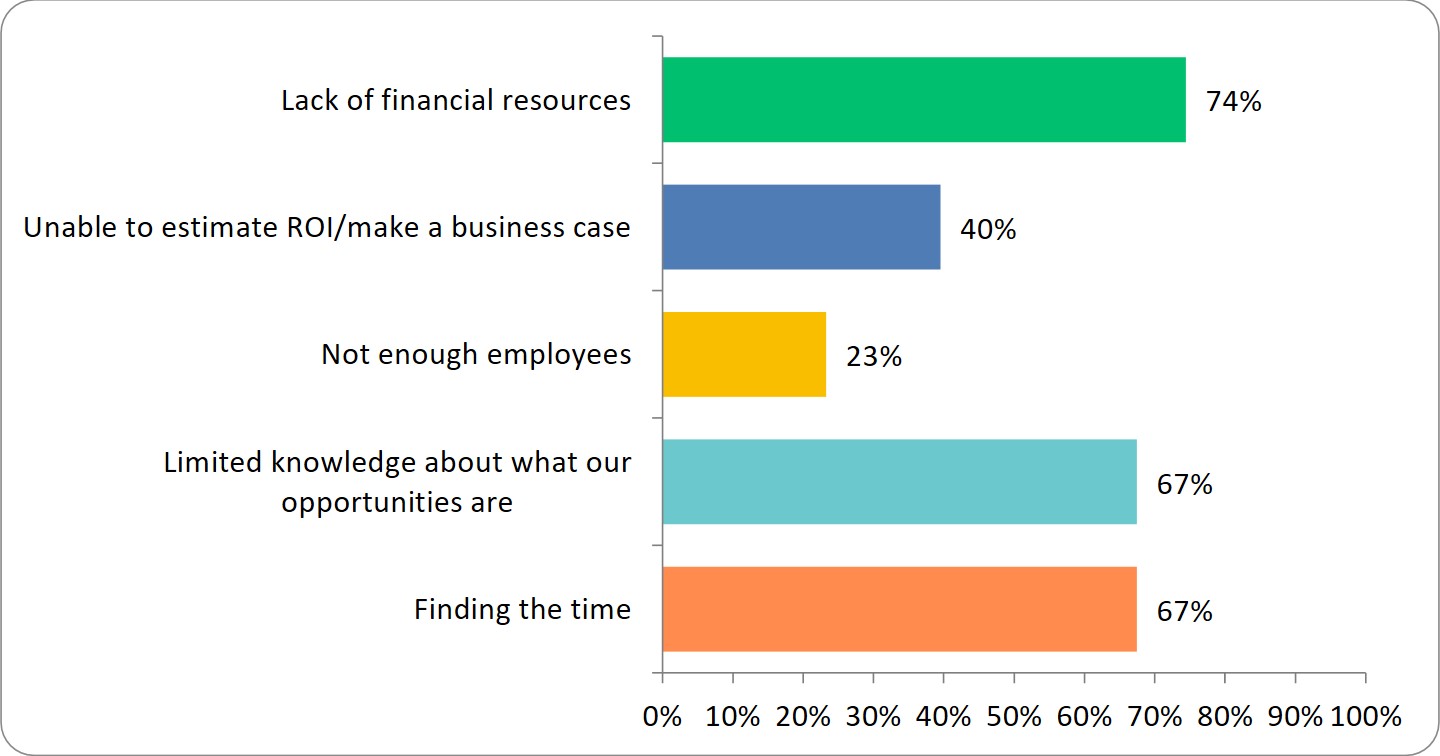 Figure 5
Figure 5
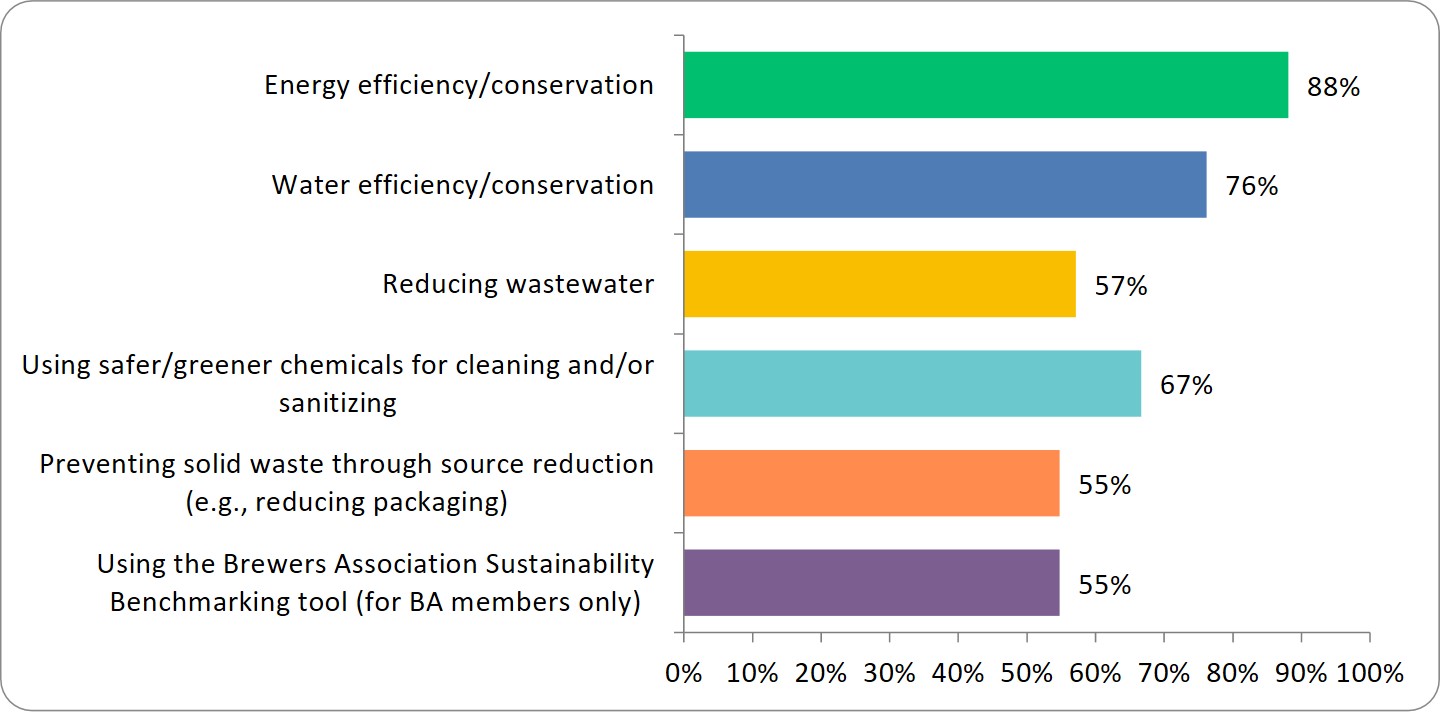 Figure 6
Figure 6
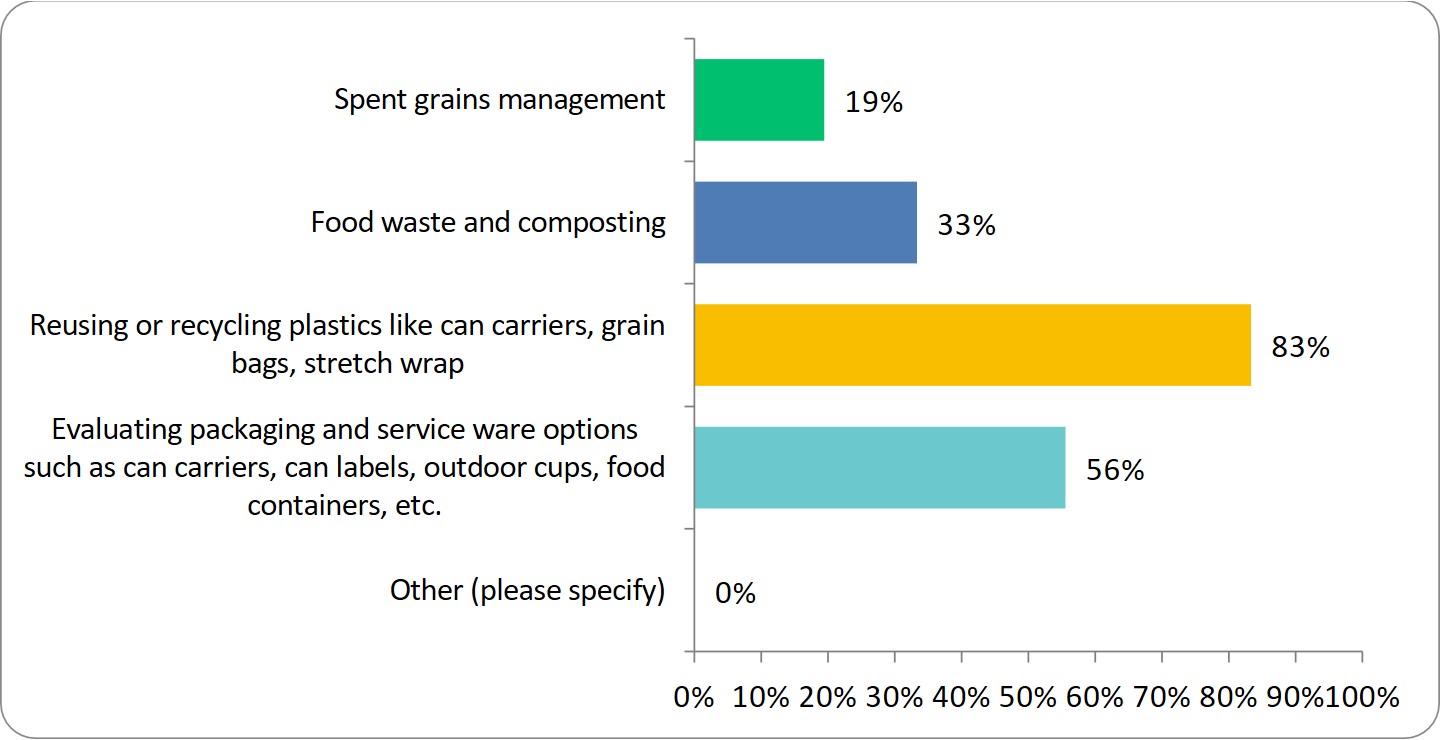 Figure 7
Figure 7
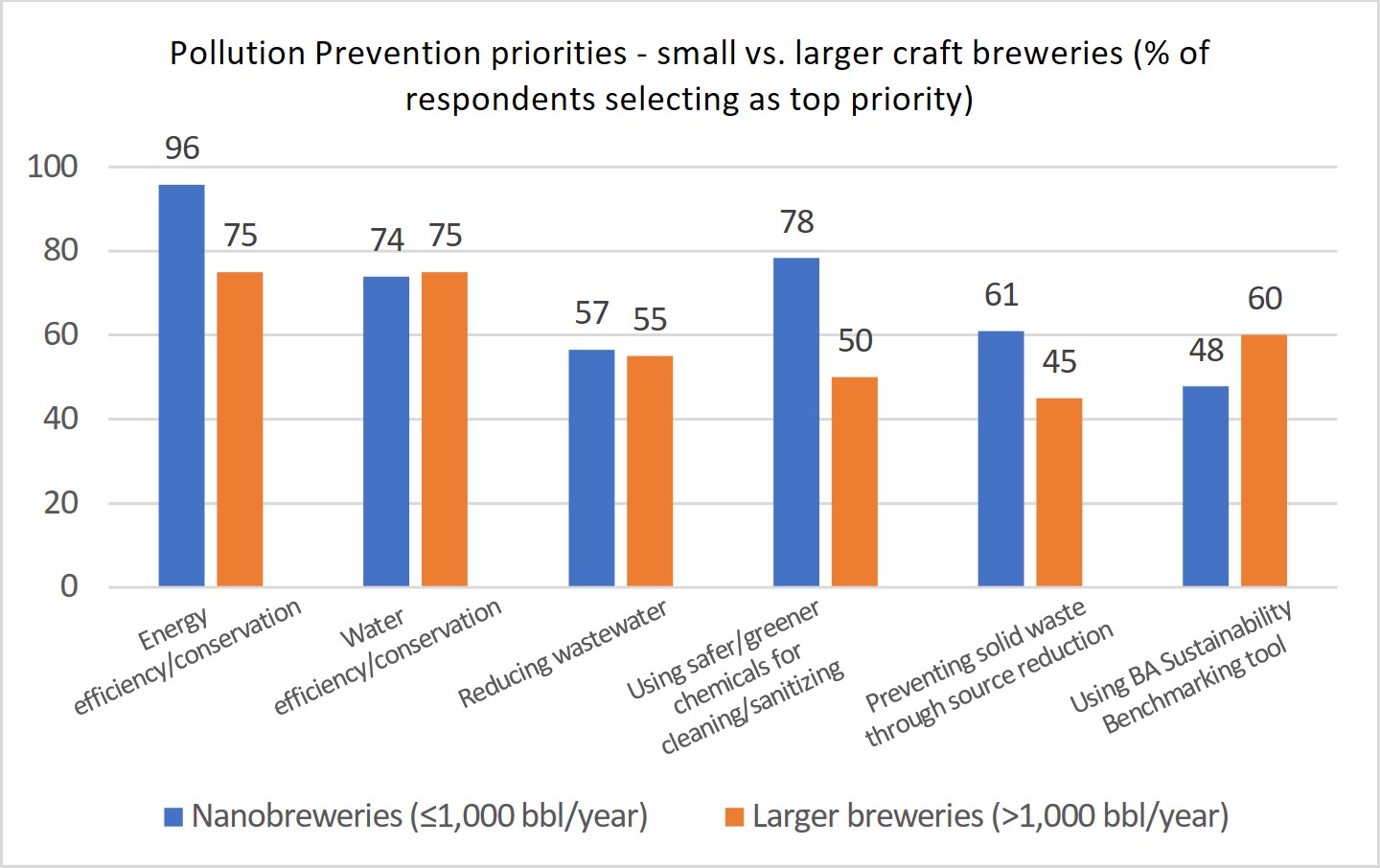 Figure 8
Figure 8
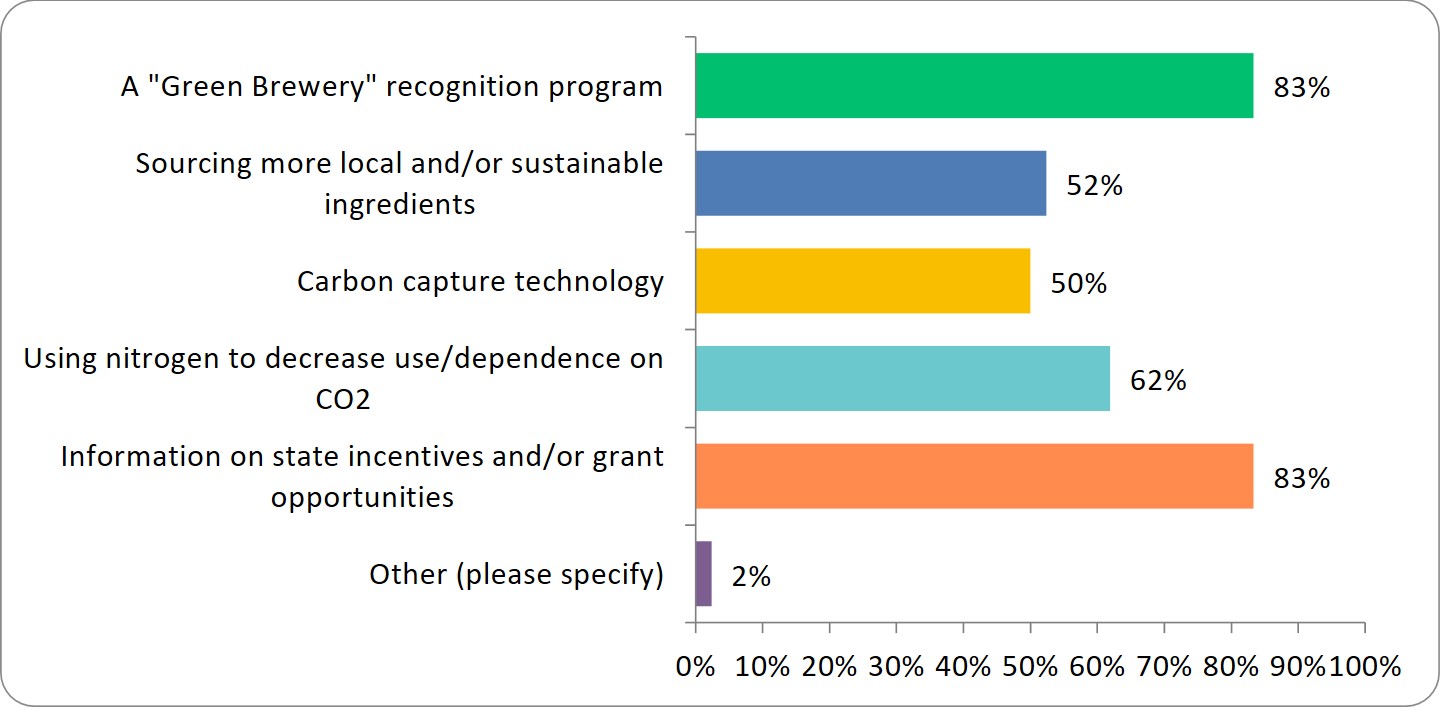 Figure 9
Figure 9
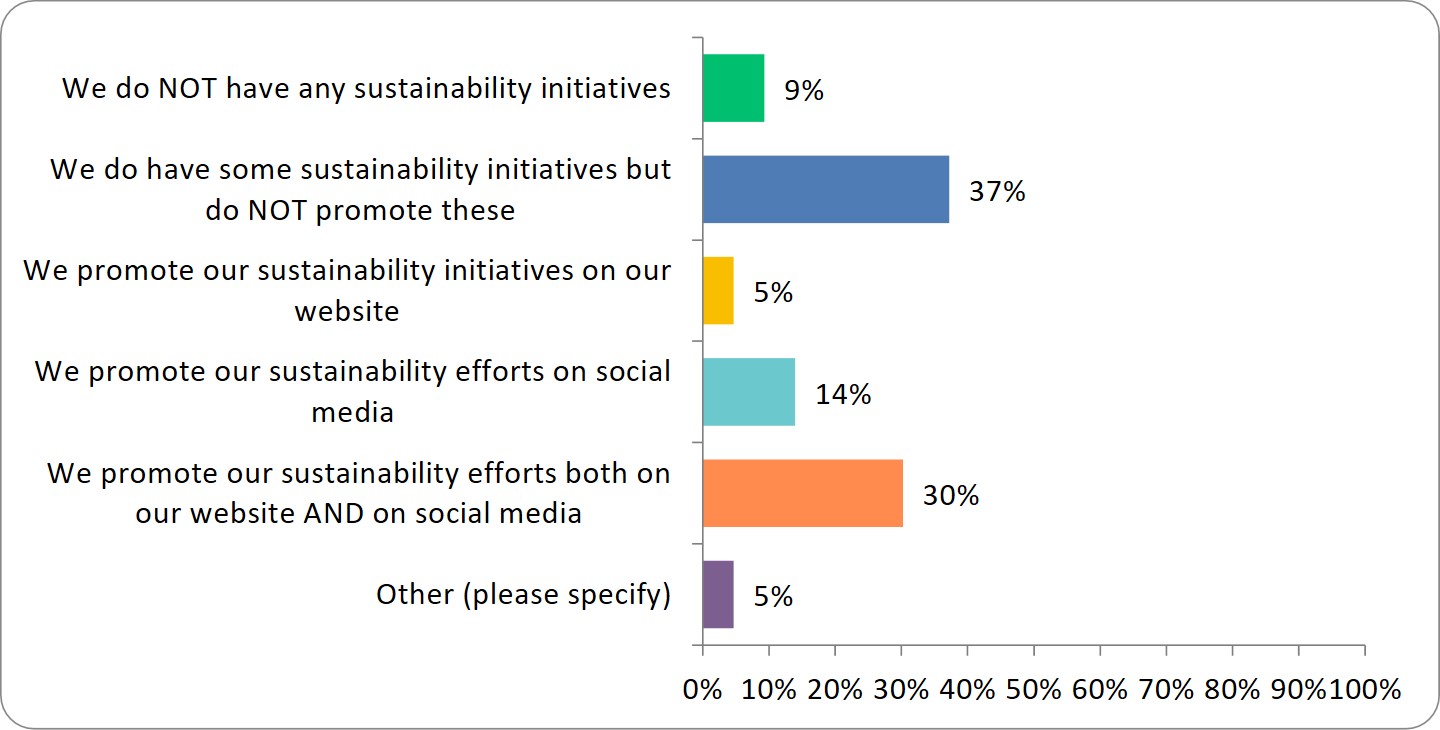 Figure 10
Figure 10
Would you like to reuse the images? Contact the journal editorial office to obtain high-quality versions.
Keywords
environmental priorities, drivers, and barriers; pollution prevention; craft beer sector; sustainable production and consumption; circular economy
Copyright © 2024
Veleva et al. This article is distributed under the terms of the Creative Commons Attribution License (CC BY 4.0), which permits unrestricted use and distribution provided that the original work is properly cited.
Funding
This research was supported by a 2-year grant from the U.S. Environmental Protection Agency, Grant ID: 4U-00A0191-0, October 2022–September 2024; title: “Providing Pollution Prevention Technical Assistance to Massachusetts Breweries”.
Cite this Article
Veleva, V., Todorova, S., Bleau, K., Mohr, J., & Vandenabeele, R. (2024). Environmental Priorities, Drivers and Barriers in the Craft Beer Sector: Insights from Massachusetts Breweries. Highlights of Sustainability, 3(3), 275–293. https://doi.org/10.54175/hsustain3030016
References
1.
Veleva, V. (2021). The role of entrepreneurs in advancing sustainable lifestyles: Challenges, impacts, and future opportunities. Journal of Cleaner Production, 283, 124658. https://doi.org/10.1016/j.jclepro.2020.124658
2.
Mont, O. (2019). Chapter 1: Introduction to a research agenda for sustainable consumption governance. In A Research Agenda for Sustainable Consumption Governance. Edward Elgar Publishing. https://doi.org/10.4337/9781788117814.00008
3.
Reichheld, A., Peto, J., & Ritthaler, C. (18 September 2023). Research: Consumers’ sustainability demands are rising. Harvard Business Review. https://hbr.org/2023/09/research-consumers-sustainability-demands-are-rising (accessed 18 June 2024).
4.
Luederitz, C., Caniglia, G., Colbert, B., & Burch, S. (2021). How do small businesses pursue sustainability? The role of collective agency for integrating planned and emergent strategy making. Business Strategy and the Environment, 30(7), 3376–3393. https://doi.org/10.1002/bse.2808
5.
Purwandani, J. A., & Michaud, G. (2021). What are the drivers and barriers for green business practice adoption for SMEs? Environment Systems and Decisions, 41(4), 577–593. https://doi.org/10.1007/s10669-021-09821-3
6.
Westman, L., Luederitz, C., Kundurpi, A., Mercado, A. J., Weber, O., & Burch, S. L. (2019). Conceptualizing businesses as social actors: A framework for understanding sustainability actions in small‐and medium‐sized enterprises. Business Strategy and the Environment, 28(2), 388–402. https://doi.org/10.1002/bse.2256
7.
B-Corp. (2023). What’s behind the B? https://usca.bcorporation.net/about-b-corps (accessed 18 June 2024).
8.
Raval, A. (19 February 2023). The struggle for the soul of the B Corp movement. Financial Times. https://www.ft.com/content/0b632709-afda-4bdc-a6f3-bb0b02eb5a62 (accessed 18 June 2024).
9.
Main, K. (7 December 2022). Small business statistics of 2023. Forbes. https://www.forbes.com/advisor/business/small-business-statistics (accessed 18 June 2024).
10.
Rahman, I., Nanu, L., & Sozen, E. (2023). The adoption of environmental practices in craft breweries: The role of owner-managers’ consumption values, motivation, and perceived business challenges. Journal of Cleaner Production, 416, 137948. https://doi.org/10.1016/j.jclepro.2023.137948
11.
BlueGreen Alliance. (2023). Inflation Reduction Act and the Bipartisan Infrastructure Law Resource Center. https://www.bluegreenalliance.org/site/inflation-reduction-act-and-bipartisan-infrastructure-law-resource-center (accessed 15 June 2024).
12.
Brewers Association. (2023). Massachusetts’s Craft Beer Sales & Production Statistics 2022. https://www.brewersassociation.org/statistics-and-data/state-craft-beer-stats/?state=MA (accessed 15 June 2024).
13.
Massachusetts Brewers Guild (MBG). (2023). Breweries. https://massbrewersguild.org/breweries (accessed 18 June 2024).
14.
Ness, B. (2018). Beyond the pale (ale): An exploration of the sustainability priorities and innovative measures in the craft beer sector. Sustainability, 10(11), 4108. https://doi.org/10.3390/su10114108
15.
Rosburg, A., & Grebitus, C. (2021). Sustainable development in the craft brewing industry: A case study of Iowa brewers. Business Strategy and the Environment, 30(7), 2966–2979. https://doi.org/10.1002/bse.2782
16.
Bahl, H. C., Gupta, J. N., & Elzinga, K. G. (2021). A framework for a sustainable craft beer supply chain. International Journal of Wine Business Research, 33(3), 394–410.
17.
U.S. Environmental Protection Agency. (2023). Pollution Prevention (P2). https://www.epa.gov/p2/learn-about-pollution-prevention (accessed 15 June 2024).
18.
Song, Q., Li, J., & Zeng, X. (2015). Minimizing the increasing solid waste through zero waste strategy. Journal of Cleaner Production, 104, 199–210. https://doi.org/10.1016/j.jclepro.2014.08.027
19.
United Nations. (2024). United Nations Conference on Environment and Development, Rio de Janeiro, Brazil, 3–14 June 1992. https://www.un.org/en/conferences/environment/rio1992 (accessed 18 June 2024).
20.
Bocken, N., Strupeit, L., Whalen, K., & Nußholz, J. (2019). A review and evaluation of circular business model innovation tools. Sustainability, 11(8), 2210. https://doi.org/10.3390/su11082210
21.
Ellen MacArthur Foundation. (2024). What is a circular economy? https://www.ellenmacarthurfoundation.org/topics/circular-economy-introduction/overview (accessed 10 June 2024).
22.
Corvellec, H., Stowell, A. F., & Johansson, N. (2022). Critiques of the circular economy. Journal of Industrial Ecology, 26(2), 421–432. https://doi.org/10.1111/jiec.13187
23.
Hartley, K., Schülzchen, S., Bakker, C. A., & Kirchherr, J. (2023). A policy framework for the circular economy: Lessons from the EU. Journal of Cleaner Production, 412, 137176. https://doi.org/10.1016/j.jclepro.2023.137176
24.
Gonçalves, H., Magalhães, V. S., Ferreira, L. M., & Arantes, A. (2024). Overcoming Barriers to Sustainable Supply Chain Management in Small and Medium-Sized Enterprises: A Multi-Criteria Decision-Making Approach. Sustainability, 16(2), 506. https://doi.org/10.3390/su16020506
25.
Mainardis, M., Hickey, M., & Dereli, R. K. (2024). Lifting craft breweries sustainability through spent grain valorisation and renewable energy integration: A critical review in the circular economy framework. Journal of Cleaner Production, 447, 141527. https://doi.org/10.1016/j.jclepro.2024.141527
26.
Cherel-Bonnemiason, C., Feber, D., Leger, S., Letoffe, A., & Nordigarden, D. (7 February 2022). Sustainability in packaging: Global regulatory development across 30 countries. McKinsey & Company. https://www.mckinsey.com/industries/paper-forest-products-and-packaging/our-insights/sustainability-in-packaging-global-regulatory-development-across-30-countries (accessed 10 June 2024).
27.
Borondy, K. (2023). State legislators, grass-roots orgs: Single-use plastic in Massachusetts ‘gots to go’. Telegram & Gazette. https://www.telegram.com/story/news/state/2023/09/14/bills-filed-could-increase-container-deposits-bar-burning-plastic-as-incinerator-fuel/70846885007 (accessed 18 June 2024).
28.
NOAA. (2024). 2023 was the world’s warmest year on record, by far. https://www.noaa.gov/news/2023-was-worlds-warmest-year-on-record-by-far (accessed 15 June 2024).
29.
Bocken, N., Weissbrod, I., & Antikainen, M. (2021). Business experimentation for sustainability: Emerging perspectives. Journal of Cleaner Production, 281, 124904. https://doi.org/10.1016/j.jclepro.2020.124904
30.
Blank, S. (May 2013). Why the lean start-up changes everything, Harvard Business Review. https://hbr.org/2013/05/why-the-lean-start-up-changes-everything (accessed 18 June 2024).
31.
Pacheco, D. F., Dean, T. J., & Payne, D. S. (2010). Escaping the green prison: Entrepreneurship and the creation of opportunities for sustainable development. Journal of Business Venturing, 25(5), 464–480. https://doi.org/10.1016/j.jbusvent.2009.07.006
32.
Windsor, D. (2018). Environmental dystopia versus sustainable development utopia: Roles of businesses, consumers, institutions, and technologies. In Social innovation and sustainable entrepreneurship (pp. 9–24). Edward Elgar Publishing. https://doi.org/10.4337/9781788116855.00007
33.
Bocken, N. M., Schuit, C. S., & Kraaijenhagen, C. (2018). Experimenting with a circular business model: Lessons from eight cases. Environmental Innovation and Societal Transitions, 28, 79–95. https://doi.org/10.1016/j.eist.2018.02.001
34.
Weissbrod, I., & Bocken, N. M. (2017). Developing sustainable business experimentation capability–A case study. Journal of Cleaner Production, 142, 2663–2676. https://doi.org/10.1016/j.jclepro.2016.11.009
35.
Bojovic, N., Genet, C., & Sabatier, V. (2018). Learning, signaling, and convincing: The role of experimentation in the business modeling process. Long Range Planning, 51(1), 141–157. https://doi.org/10.1016/j.lrp.2017.09.001
36.
Craft for Climate. (2021). Can carrier reuse and recycling program. https://www.craftforclimate.org/can-carrier-program (accessed 18 June 2024).
37.
Gellerman, B. (26 October 2021). Craft beer has a plastic problem. Some breweries are finding solutions. WBUR. https://www.wbur.org/news/2021/10/26/craft-beer-plastic-toppers-recycling (accessed 10 June 2024).
38.
Hernández-Chea, R., Jain, A., Bocken, N. M. P., & Gurtoo, A. (2021). The Business Model in Sustainability Transitions: A Conceptualization. Sustainability, 13, 5763. https://doi.org/10.3390/su13115763
39.
George, G., Howard-Grenville, J., Joshi, A., & Tihanyi, L. (2016). Understanding and tackling societal grand challenges through management research. Academy of Management Journal, 59(6), 1880–1895. https://doi.org/10.5465/amj.2016.4007
40.
GlobeNewsWire. (23 November 2021). Global food & grocery retail market size to amass USD 17.29 trillion by 2027. https://www.globenewswire.com/news-release/2021/11/23/2339613/0/en/Global-food-grocery-retail-market-size-to-amass-USD-17-29-trillion-by-2027.html (accessed 18 June 2024).
41.
Gebhardt, S. L. (2018). Sustainable beer: An overview of sustainable practices in Southern California [Master’s Thesis, California State Polytechnic University, Pomona]. ScholarWorks. https://scholarworks.calstate.edu/concern/theses/6q182n42n (accessed 18 June 2024).
42.
Brewers Association. (2024). National beer sales and production data. https://www.brewersassociation.org/statistics-and-data/national-beer-stats (accessed 18 June 2024).
43.
Brewers Association. (2023). Sustainability Benchmarking Tool. https://www.brewersassociation.org/educational-publications/sustainability-benchmarking-tool (accessed 15 June 2024).
44.
Díaz, A. B., Durán-Guerrero, E., Lasanta, C., & Castro, R. (2022). From the raw materials to the bottled product: Influence of the entire production process on the organoleptic profile of industrial beers. Foods, 11(20), 3215. https://doi.org/10.3390/foods11203215
45.
Shin, R., & Searcy, C. (2018). Evaluating the greenhouse gas emissions in the craft beer industry: an assessment of challenges and benefits of greenhouse gas accounting. Sustainability, 10(11), 4191. https://doi.org/10.3390/su10114191
46.
Brewers Association. (2018). Sustainability Benchmarking Reports (Members only). https://www.brewersassociation.org/educational-publications/sustainability-benchmarking-reports (accessed 18 June 2024).
47.
WBCSD. (2023). Greenhouse Gas Protocol. https://ghgprotocol.org (accessed 18 June 2024).
48.
Francis, L. (2017). The carbon footprint of a beer. Sestra System. https://www.sestrasystems.com/carbon-footprint-beer (accessed 18 June 2024).
49.
Morgan, D. R., Styles, D., & Lane, E. T. (2021). Thirsty work: Assessing the environmental footprint of craft beer. Sustainable Production and Consumption, 27, 242–253. https://doi.org/10.1016/j.spc.2020.11.005
50.
Massachusetts Clean Energy Center (MassCEC). (2023). MassCEC Funding. https://www.masscec.com/funding (accessed 18 June 2024).
51.
Kanagachandran, K., & Jayaratne, R. (2006). Utilization potential of brewery waste water sludge as an organic fertilizer. Journal of the Institute of Brewing, 112(2), 92–96. https://doi.org/10.1002/j.2050-0416.2006.tb00236.x
52.
Glennon, R. (2 January 2018). Could craft breweries help lead the way to water conservation? Pacific Standard. https://psmag.com/environment/crafting-solutions-to-water-shortages-in-brewing (accessed 15 June 2024).
53.
U.S. Environmental Protection Agency. (2020). P2: Pollution Prevention; Brewing Success with P2 Grantees. https://portal.ct.gov/-/media/DEEP/p2/business_industry/Breweries/P2-Brewery-Factsheet_Oct2020EPA.pdf (accessed 18 June 2024).
54.
Zeko-Pivač, A., Tišma, M., Žnidaršič-Plazl, P., Kulisic, B., Sakellaris, G., Hao, J. et al. (2022) The potential of brewer’s spent grain in the circular bioeconomy: State of the art and future perspectives. Frontiers in Bioengineering and Bio-technology, 10, 870744. https://doi.org/10.3389/fbioe.2022.870744
55.
Upcycled Foods. (29 July 2022). What is “Brewer’s Spent Grain?” https://upcycledfoods.com/what-is-brewers-spent-grain (accessed 15 June 2024).
56.
Massachusetts Department of Environmental Protection (MA DEP). (2023). Commercial Food Material Disposal Ban. https://www.mass.gov/guides/commercial-food-material-disposal-ban#-about-the-disposal-ban- (accessed 15 June 2024).
57.
Jackowski, M., Niedźwiecki, Ł., Jagiełło, K., Uchańska, O., & Trusek, A. (2020). Brewer’s spent grains—valuable beer industry by-product. Biomolecules, 10(12), 1669. https://doi.org/10.3390/biom10121669
58.
Veleva V., & S. Foley. (2018). RISE Products: Transforming Organic Waste into Healthy Product. SAGE Publications. https://doi.org/10.4135/9781526462565
59.
Kerby, C., & Vriesekoop, F. (2017). An overview of the utilisation of brewery by-products as generated by british craft breweries. Beverages, 3(2), 24. https://doi.org/10.3390/beverages3020024
60.
Toxics Use Reduction Institute (TURI). (2020). Assessment of Alternatives to Cleaners and Sanitizers for the Brewing Industry. https://www.turi.org/TURI_Publications/TURI_Guides_to_Safer_Chemicals/Assessment_of_Alternatives_to_Cleaners_and_Sanitizers_for_the_Brewing_Industry (accessed 15 June 2024).
61.
Toxics Use Reduction Institute (TURI). (2018). Microbrewery shines with safer cleaning and sanitizing technology. https://www.turi.org/Our_Work/Industry_Small_Business/Small_Businesses/Breweries (accessed 15 June 2024).
62.
Evans, N., & Sawyer, J. (2010). CSR and stakeholders of small businesses in regional South Australia. Social Responsibility Journal, 6(3), 433–451. https://doi.org/10.1108/17471111011064799
63.
Lawrence, S. R., Collins, E., Pavlovich, K., & Arunachalam, M. (2006). Sustainability practices of SMEs: the case of NZ. Business Strategy and the Environment, 15(4), 242–257. https://doi.org/10.1002/bse.533
64.
Revell, A., & Blackburn, R. (2007). The business case for sustainability? An examination of small firms in the UK's construction and restaurant sectors. Business Strategy and the Environment, 16(6), 404–420. https://doi.org/10.1002/bse.499
65.
Shrivastava, P., & Kennelly, J. J. (2013). Sustainability and place-based enterprise. Organization & Environment, 26(1), 83–101. https://doi.org/10.1177/1086026612475068
66.
Williams, S., & Schaefer, A. (2013). Small and medium‐sized enterprises and sustainability: Managers’ values and engagement with environmental and climate change issues. Business Strategy and the Environment, 22(3), 173–186. https://doi.org/10.1002/bse.1740
67.
Sozen, E., O’Neill, M., & Rahman, I. (2021). An exploratory study of US craft brewery owners’ motivations for adopting environmental practices. International Journal of Contemporary Hospitality Management, 34(2), 713–736. https://doi.org/10.1108/IJCHM-04-2021-0428
68.
Patanode-Fisher, T. (23 November 2022). The impact of rising energy costs on businesses. Massachusetts Brewers Guild. https://massbrewersguild.org/news/2022/11/23/the-impact-of-rising-energy-costs-on-businesses (accessed 15 June 2024).
69.
Eden, L. (11 June 2022). Framingham mayor accepts recommendation to hike water and sewer rates by 16 percent. MetroWest Daily News. https://www.metrowestdailynews.com/story/news/2022/06/11/framingham-ma-raising-water-sewer-rates-2023/7580197001 (accessed 10 June 2024).
70.
Carley, S., & Yahng, L. (2018). Willingness-to-pay for sustainable beer. PloS ONE, 13(10), e0204917. https://doi.org/10.1371/journal.pone.0204917
71.
Del Giudice, M., Khan, Z., De Silva, M., Scuotto, V., Caputo, F., & Carayannis, E. (2017). The microlevel actions undertaken by owner‐managers in improving the sustainability practices of cultural and creative small and medium enterprises: A United Kingdom–Italy comparison. Journal of Organizational Behavior, 38(9), 1396–1414. https://doi.org/10.1002/job.2237
72.
Clausen, L. P. W., Nielsen, M. B., Oturai, N. B., Syberg, K., & Hansen, S. F. (2023). How environmental regulation can drive innovation: Lessons learned from a systematic review. Environmental Policy and Governance, 33(4), 364–373. https://doi.org/10.1002/eet.2035
73.
Veleva, V. R., Cue Jr, B. W., & Todorova, S. (2018). Benchmarking green chemistry adoption by the global pharmaceutical supply chain. ACS Sustainable Chemistry & Engineering, 6(1), 2–14. https://doi.org/10.1021/acssuschemeng.7b02277
74.
U.S. Environmental Protection Agency. (2022). Stormwater discharges from municipal sources. https://www.epa.gov/npdes/stormwater-discharges-municipal-sources (accessed 15 June 2024).
75.
Bär, R. M., Schmid, S., Zeilmann, M., Kleinert, J., Beyer, K., Glas, K., et al. (2022). Simulation of Energy and Media Demand of Batch-Oriented Production Systems in the Beverage Industry. Sustainability, 14(3), 1599. https://doi.org/10.3390/su14031599
76.
Olajire, A. A. (2020). The brewing industry and environmental challenges. Journal of Cleaner Production, 256, 102817. https://doi.org/10.1016/j.jclepro.2012.03.003
77.
Robinson, A. (30 June 2022). Are craft beer companies really more sustainable? Corporate Knights. https://www.corporateknights.com/food-beverage/craft-beer-sustainable/#:~:text=As%20more%20consumers%20look%20to,in%20general%2C%20outperform%20craft%20brewers (accessed 15 June 2024).
78.
U.S. Department of Energy. (2016). Energy Efficiency in Separate Tenant Spaces-A Feasibility Study. https://www.energystar.gov/sites/default/files/asset/document/DOE%20-%20Energy%20Efficiency%20in%20Separate%20Tenant%20Spaces_0.pdf (accessed 15 June 2024).
79.
Veleva, V., Horsley, C., & Chatrath, G. (2024). Reducing a beer’s carbon footprint: The case of Jack’s Abby Craft Lagers. In Sage Business Cases. SAGE Publications. https://doi.org/10.4135/9781071934050
80.
Staples, A. J., Malone, T., & Sirrine, J. R. (2021). Hopping on the localness craze: What brewers want from state‐grown hops. Managerial and Decision Economics, 42(2), 463–473. https://doi.org/10.1002/mde.3246
81.
Enthoven, L., & Van den Broeck, G. (2021). Local food systems: Reviewing two decades of research. Agricultural Systems, 193, 103226. https://doi.org/10.1016/j.agsy.2021.103226
82.
Connecticut Department of Energy & Environmental Protection. (2023). Sustainable Breweries & Other Craft Beverages. https://portal.ct.gov/DEEP/P2/Industry/Sustainable-Breweries (accessed 15 June 2024).
83.
New Hampshire Department of Environmental Services. (2023). Sustainable Craft Beverages. https://www.des.nh.gov/business-and-community/greening-your-business/sustainable-craft-beverages (accessed 18 June 2024).
84.
University of Southern Maine. (2023). New England Sustainable Craft Beverage Program Launches with Five Maine Brewers. https://usm.maine.edu/news/new-england-sustainable-craft-beverage-program-launches-with-five-maine-brewers (accessed 18 June 2024).
85.
Gupta, H., & Barua, M. K. (2018). A framework to overcome barriers to green innovation in SMEs using BWM and Fuzzy TOPSIS. Science of the Total Environment, 633, 122–139. https://doi.org/10.1016/j.scitotenv.2018.03.173
86.
Sauro, J., & Lewis, J. R. (2005). Estimating Completion Rates from Small Samples Using Binomial Confidence Intervals: Comparisons and Recommendations. Proceedings of the Human Factors and Ergonomics Society Annual Meeting, 49(24), 2100–2103. https://doi.org/10.1177/154193120504902407
87.
Whelan, T., & Fink, C. (21 October 2016). The comprehensive business case for sustainability. Harvard Business Review. https://hbr.org/2016/10/the-comprehensive-business-case-for-sustainability (accessed 15 June 2024).
88.
Jones, E. (2018). Brewing Green: Sustainability in the Craft Beer Movement. In C. Kline, S. Slocum, & C. Cavaliere (Eds.), Craft beverages and tourism, volume 2—Environmental, societal, and marketing implications (pp. 9–26). Palgrave Macmillan, Cham. https://doi.org/10.1007/978-3-319-57189-8_2
89.
ACEEE. (2022). The State Energy Efficiency Scorecard. https://www.aceee.org/state-policy/scorecard (accessed 10 June 2024).
90.
Tyler, B. B., Lahneman, B., Cerrato, D., Cruz, A. D., Beukel, K., Spielmann, N., et al. (2023). Environmental practice adoption in SMEs: The effects of firm proactive orientation and regulatory pressure. Journal of Small Business Management, 1–36. https://doi.org/10.1080/00472778.2023.2218435
91.
Porter, M. & Kramer, M. (January–February 2011). Creating shared value. Harvard Business Review. https://hbr.org/2011/01/the-big-idea-creating-shared-value (accessed 15 June 2024).
Metrics
Loading...
Journal Menu
Journal Contact
Highlights of Sustainability
Editorial Office
Highlights of Science
Avenida Madrid, 189-195, 3-3
08014 Barcelona, Spain
08014 Barcelona, Spain
Cathy Wang
Managing Editor